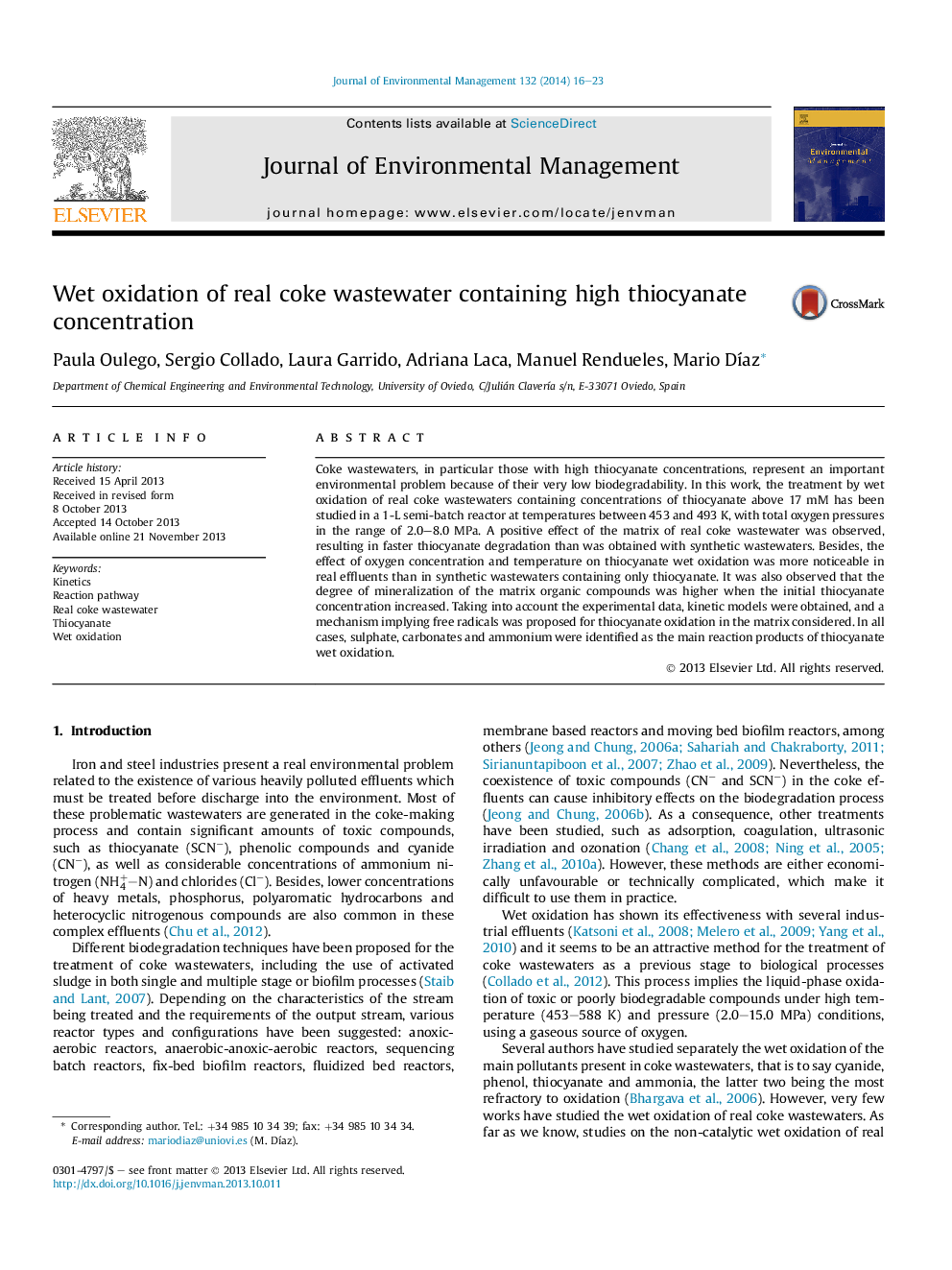| Article ID | Journal | Published Year | Pages | File Type |
|---|---|---|---|---|
| 1055776 | Journal of Environmental Management | 2014 | 8 Pages |
•Scarcely biodegradable coke wastewaters are successfully treated by wet oxidation.•Thiocyanate and also the matrix compounds are oxidized, allowing high COD reduction.•Thiocyanate is degraded faster in wastewater than alone, due to matrix compounds.•Sulphate, carbonate and ammonium are identified as the main final products.•A kinetic model and a free radical reaction mechanism are proposed.
Coke wastewaters, in particular those with high thiocyanate concentrations, represent an important environmental problem because of their very low biodegradability. In this work, the treatment by wet oxidation of real coke wastewaters containing concentrations of thiocyanate above 17 mM has been studied in a 1-L semi-batch reactor at temperatures between 453 and 493 K, with total oxygen pressures in the range of 2.0–8.0 MPa. A positive effect of the matrix of real coke wastewater was observed, resulting in faster thiocyanate degradation than was obtained with synthetic wastewaters. Besides, the effect of oxygen concentration and temperature on thiocyanate wet oxidation was more noticeable in real effluents than in synthetic wastewaters containing only thiocyanate. It was also observed that the degree of mineralization of the matrix organic compounds was higher when the initial thiocyanate concentration increased. Taking into account the experimental data, kinetic models were obtained, and a mechanism implying free radicals was proposed for thiocyanate oxidation in the matrix considered. In all cases, sulphate, carbonates and ammonium were identified as the main reaction products of thiocyanate wet oxidation.
Graphical abstractFigure optionsDownload full-size imageDownload as PowerPoint slide
